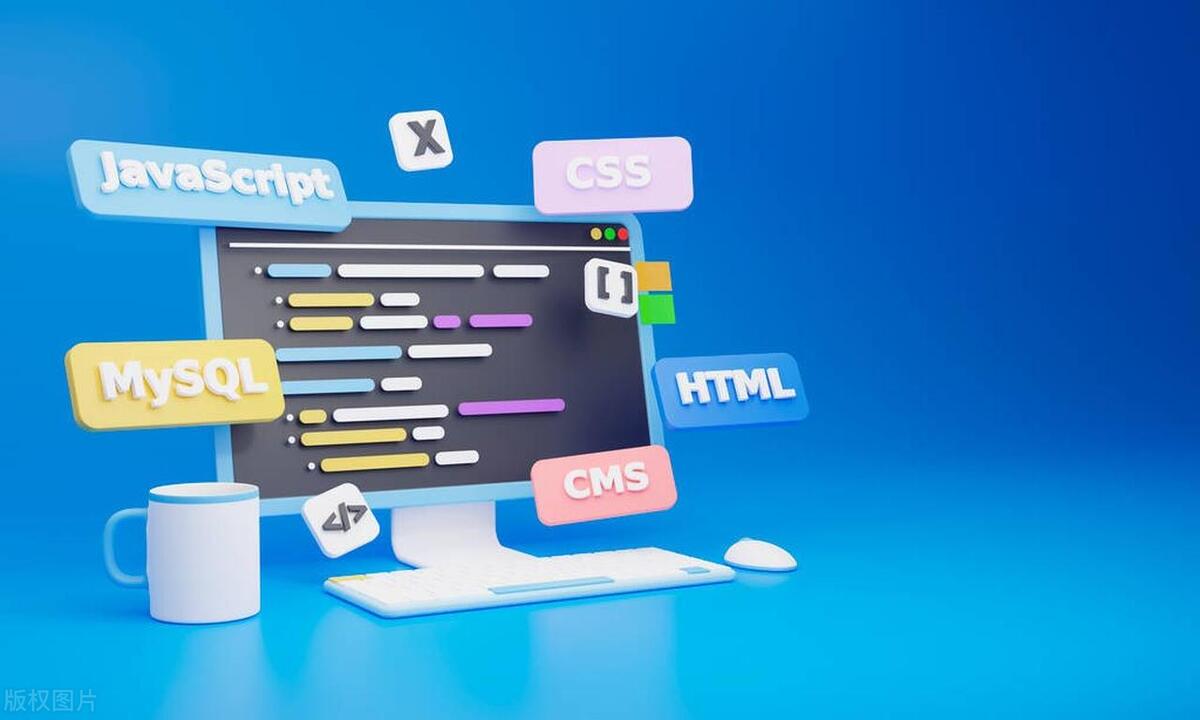How to implement front-end real-time communication using WebSockets? 1. Establish a connection: Use new WebSocket('wss://address') to create an instance and listen to the onopen/onmessage/onerror/onclose event; 2. Process message format: Send and receive JSON strings and parse and serialize them through try-catch, and agree to distinguish message types; 3. Response to interrupt reconnection: Listen to the onclose/onerror event automatically reconnects, limit the maximum number of times such as 5 times, or use Socket.io and other libraries to manage state; 4. Performance optimization: Avoid high-frequency big data transmission, call socket.close() when the page is closed to release resources, sensitive operations combined with HTTP verification, can introduce message queues to prevent stacking.

Real-time communication is becoming increasingly important in modern front-end development, and WebSockets is one of the core technologies to achieve this. It provides a full duplex communication channel that allows low-latency, continuous data exchange between clients and servers. Compared with the traditional polling method, WebSockets is more efficient and more suitable for application scenarios that require real-time updates.

Here are some key points and suggestions on the use of WebSockets from a front-end perspective.
How to establish a basic WebSocket connection?
Using WebSockets is not complicated. The front-end simply needs to create a WebSocket instance and pass in the server address:

const socket = new WebSocket('wss://your-websocket-server.com');
Here you should pay attention to using wss:// instead of ws:// , especially in production environments, because the former is encrypted (WebSocket Secure), which can avoid being attacked by man-in-the-middle or intercepted by certain networks.
After the connection is established, the communication process can be handled by listening to several key events:

-
onopen: Triggered when the connection is successful -
onmessage: Triggered when a server message is received -
onerror: Triggered when an error occurs -
onclose: Triggered when the connection is closed
For example:
socket.onopen = () => {
console.log('WebSocket connection established');
};
socket.onmessage = (event) => {
console.log('Received message:', event.data);
};How does the front-end handle WebSocket message format?
The data transferred by WebSocket can be text (string) or binary (such as ArrayBuffer or Blob ). In most front-end scenarios, using strings in JSON format is the mainstream practice.
The data sent by the server is usually JSON in string format, and the front-end needs to be manually parsed:
socket.onmessage = (event) => {
try {
const data = JSON.parse(event.data);
console.log('Parsed data:', data);
//Do different processing according to data.type} catch (error) {
console.error('Failed to parse message:', error);
}
};Conversely, the front-end needs to serialize the object before sending a message:
socket.send(JSON.stringify({
type: 'user_message',
content: 'Hello server!'
})); It is recommended that the front and back ends agree on good message formats, such as including type fields to distinguish message types, so that the processing is clearer.
How to deal with connection interruptions and reconnections?
WebSocket is a long connection, but network instability, server restart, user switch networks, etc. may cause connection interruption. The front-end needs to consider the automatic reconnect mechanism.
A simple way is:
- Listen to
oncloseandonerrorevents - Set the reconnect interval (such as 5 seconds)
- Limit the maximum number of reconnections to avoid infinite loops
Sample code:
let reconnectAttempts = 0;
const maxReconnectAttempts = 5;
function connect() {
const socket = new WebSocket('wss://your-websocket-server.com');
socket.onclose = () => {
if (reconnectAttempts < maxReconnectAttempts) {
setTimeout(() => {
reconnectAttempts ;
connect();
}, 5000);
}
};
socket.onerror = () => {
socket.close();
};
}Of course, mature libraries can also be used in actual projects to manage connection status, such as Socket.io or ReconnectingWebSocket , which already have built-in functions such as disconnection and reconnection.
Performance and usage suggestions
The performance advantage of WebSockets is that it reduces the repeated transmission of request headers and is suitable for high-frequency and small data volume communication. However, the following points should be paid attention to when using:
- Avoid frequent sending of large amounts of data, which may affect page performance
- Reasonably control the connection life cycle. Remember to call
socket.close()when the page is closed and release resources - For sensitive operations (such as login status, permission changes), it is recommended to combine HTTP interface for verification, and do not rely entirely on WebSocket messages.
- Consider using a message queue mechanism to prevent messages from pile up or loss
Basically that's it. WebSockets looks simple, but there are many details to pay attention to in actual applications, especially when the front-end needs to handle connection status, message parsing, error handling, etc. However, as long as the design is reasonable, it can indeed significantly improve the real-time and interactive experience of the application.
The above is the detailed content of WebSockets for Real-Time Frontend Communication. For more information, please follow other related articles on the PHP Chinese website!

Hot AI Tools

Undress AI Tool
Undress images for free

Undresser.AI Undress
AI-powered app for creating realistic nude photos

AI Clothes Remover
Online AI tool for removing clothes from photos.

Clothoff.io
AI clothes remover

Video Face Swap
Swap faces in any video effortlessly with our completely free AI face swap tool!

Hot Article

Hot Tools

Notepad++7.3.1
Easy-to-use and free code editor

SublimeText3 Chinese version
Chinese version, very easy to use

Zend Studio 13.0.1
Powerful PHP integrated development environment

Dreamweaver CS6
Visual web development tools

SublimeText3 Mac version
God-level code editing software (SublimeText3)
 How does React handle focus management and accessibility?
Jul 08, 2025 am 02:34 AM
How does React handle focus management and accessibility?
Jul 08, 2025 am 02:34 AM
React itself does not directly manage focus or accessibility, but provides tools to effectively deal with these issues. 1. Use Refs to programmatically manage focus, such as setting element focus through useRef; 2. Use ARIA attributes to improve accessibility, such as defining the structure and state of tab components; 3. Pay attention to keyboard navigation to ensure that the focus logic in components such as modal boxes is clear; 4. Try to use native HTML elements to reduce the workload and error risk of custom implementation; 5. React assists accessibility by controlling the DOM and adding ARIA attributes, but the correct use still depends on developers.
 Describe the difference between shallow and full rendering in React testing.
Jul 06, 2025 am 02:32 AM
Describe the difference between shallow and full rendering in React testing.
Jul 06, 2025 am 02:32 AM
Shallowrenderingtestsacomponentinisolation,withoutchildren,whilefullrenderingincludesallchildcomponents.Shallowrenderingisgoodfortestingacomponent’sownlogicandmarkup,offeringfasterexecutionandisolationfromchildbehavior,butlacksfulllifecycleandDOMinte
 What is the significance of the StrictMode component in React?
Jul 06, 2025 am 02:33 AM
What is the significance of the StrictMode component in React?
Jul 06, 2025 am 02:33 AM
StrictMode does not render any visual content in React, but it is very useful during development. Its main function is to help developers identify potential problems, especially those that may cause bugs or unexpected behavior in complex applications. Specifically, it flags unsafe lifecycle methods, recognizes side effects in render functions, and warns about the use of old string refAPI. In addition, it can expose these side effects by intentionally repeating calls to certain functions, thereby prompting developers to move related operations to appropriate locations, such as the useEffect hook. At the same time, it encourages the use of newer ref methods such as useRef or callback ref instead of string ref. To use Stri effectively
 Vue with TypeScript Integration Guide
Jul 05, 2025 am 02:29 AM
Vue with TypeScript Integration Guide
Jul 05, 2025 am 02:29 AM
Create TypeScript-enabled projects using VueCLI or Vite, which can be quickly initialized through interactive selection features or using templates. Use tags in components to implement type inference with defineComponent, and it is recommended to explicitly declare props and emits types, and use interface or type to define complex structures. It is recommended to explicitly label types when using ref and reactive in setup functions to improve code maintainability and collaboration efficiency.
 How to handle forms in Vue
Jul 04, 2025 am 03:10 AM
How to handle forms in Vue
Jul 04, 2025 am 03:10 AM
There are three key points to be mastered when processing Vue forms: 1. Use v-model to achieve two-way binding and synchronize form data; 2. Implement verification logic to ensure input compliance; 3. Control the submission behavior and process requests and status feedback. In Vue, form elements such as input boxes, check boxes, etc. can be bound to data attributes through v-model, such as automatically synchronizing user input; for multiple selection scenarios of check boxes, the binding field should be initialized into an array to correctly store multiple selected values. Form verification can be implemented through custom functions or third-party libraries. Common practices include checking whether the field is empty, using a regular verification format, and displaying prompt information when errors are wrong; for example, writing a validateForm method to return the error message object of each field. You should use it when submitting
 Server-Side Rendering with Next.js Explained
Jul 23, 2025 am 01:39 AM
Server-Side Rendering with Next.js Explained
Jul 23, 2025 am 01:39 AM
Server-siderendering(SSR)inNext.jsgeneratesHTMLontheserverforeachrequest,improvingperformanceandSEO.1.SSRisidealfordynamiccontentthatchangesfrequently,suchasuserdashboards.2.ItusesgetServerSidePropstofetchdataperrequestandpassittothecomponent.3.UseSS
 A Deep Dive into WebAssembly (WASM) for Front-End Developers
Jul 27, 2025 am 12:32 AM
A Deep Dive into WebAssembly (WASM) for Front-End Developers
Jul 27, 2025 am 12:32 AM
WebAssembly(WASM)isagame-changerforfront-enddevelopersseekinghigh-performancewebapplications.1.WASMisabinaryinstructionformatthatrunsatnear-nativespeed,enablinglanguageslikeRust,C ,andGotoexecuteinthebrowser.2.ItcomplementsJavaScriptratherthanreplac
 What is content security policy CSP
Jul 04, 2025 am 03:21 AM
What is content security policy CSP
Jul 04, 2025 am 03:21 AM
Content Security Policy (CSP) prevents attacks such as XSS by limiting the loading source of web page resources. Its core mechanism is to set a whitelist to prevent unauthorized scripts from being executed. The steps to enable include: 1. Define the policy and clarify the allowed resource sources; 2. Add Content-Security-PolicyHTTP header to the server; 3. Use Report-Only mode to test and debug in the initial stage; 4. Continuous monitoring and optimization strategies to ensure that they do not affect normal functions. Notes include handling inline scripts, careful use of third-party resources, compatibility support, and other irreplaceable security measures.






